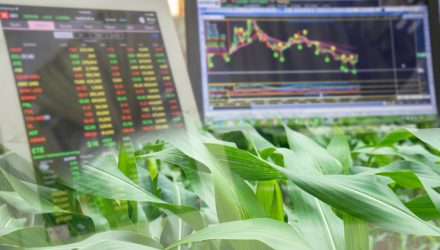Investors flock toward commodities as a hedge against inflation. Over a period of decades, commodities typically keep pace or exceed the rate of inflation. Adding to the appeal, commodities are an asset class that is typically negatively correlated with other asset classes, including stocks and bonds.
The price of commodities is also expected to be positively impacted by the Russia-Ukraine war; Russia is the largest exporter of palladium and is also a significant exporter of other metals. Ukraine and Russia are also major producers of wheat and corn for Ukraine. Thus, the prices of those commodities are expected to rise meaningfully.
More broadly, investing in commodities or alternatives is part of a well-diversified portfolio. For many investors, it’s not enough to just have exposure to stocks and bonds – that leaves out the potential benefits of alternatives, according to Kristina Hooper, chief global market strategist at Invesco.
There are three types of ETFs that provide exposure to commodities: equity-based commodity funds, physically-backed funds, and futures-based funds.
Equity-based commodity ETFs invest in commodity-related stocks, including those that produce, transport, and store commodities. An equity-based commodity ETF can expose investors to multiple companies or specific sectors.
This can also be a less expensive and safer way to gain exposure to commodities. The drawback is that the disclosure provided isn’t as direct as other options since the company itself is between the investor and the commodity they are trying to gain exposure to, adding counterparty risk.
Physically backed ETFs actually hold physical commodities in their possession and are limited to precious metals at the moment – whether or not spot cryptocurrency or uranium, for example, will eventually be allowed by the SEC in one of these structures is iffy.
The advantage of a physical ETF is that it actually owns and has possession of the commodity, removing any tracking and counterparty risk.
The disadvantage of physically-backed ETFs is that there are costs involved with delivering, holding, storing, and ensuring physical commodities. The avoidance of these costs is what often pushes investors to buy futures-based products instead.
The third type, futures-based funds, can make money regardless of which direction the price of commodities moves.
These ETFs build a portfolio of futures, forwards, and swap contracts on the underlying commodities – removing the complication and expense of holding and storing the underlying commodity.
Futures contracts come along with their own expenses, however. Most futures-based commodity ETFs pursue a “front-month” roll strategy where they hold “front-month” futures, which are the futures that are closest to expiring. The ETF needs to replace those futures before they expire with the second-month futures.
The advantage of this strategy is that it closely tracks the spot price for the commodity; however, the disadvantage is that the ETF is exposed to “rolling risk” as the expiring front-month contracts are “rolled” into the second-month contracts.
For more news, information, and strategy, visit the ETF Education Channel.








